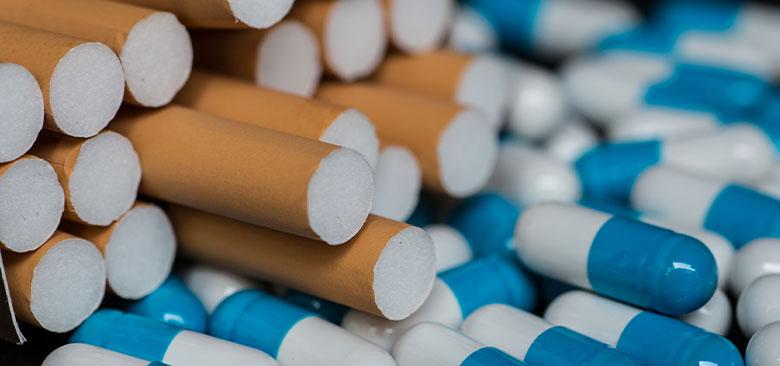
Social interaction is a critical part of an Individual's treatment for addiction and mental health issues. What can be done to mimic that interaction when health guidelines dictate physical distancing. (iStock)
Battling Addiction and Mental Health in the Time of COVID-19
The coronavirus pandemic has exposed health inequities in numerous populations. Individuals that are especially vulnerable include those battling addiction and mental health issues, as access to treatment – both pharmacological and in-person therapy – have become more difficult to receive.
How do clinicians and patients navigate these unprecedented barriers? UCSF School of Nursing faculty provide guidance against the backdrop of COVID-19.
Overcoming Barriers to Care
“There are many layers to this problem,” professor Matt Tierney said. “If you have a substance use disorder, you’re more at risk for homelessness, more at risk for other medical conditions, more at risk for mental health problems, and, ultimately, more at risk for COVID-19.”
In the wake of the coronavirus, California has implemented a shelter-in-place order and 6-foot social distancing guidelines that are challenging for people seeking treatment.  Matt Tierney
Matt Tierney
“Think about a treatment environment like a methadone clinic,” Tierney said. “You’re required to go to clinic every day. You stand in line with other people, you legally have to talk to a nurse before and after you dose. The nurse hands you a cup; there are transmission risks there.”
Social isolation is a leading cause for substance use. Without the opportunity to engage in healthy activities, like participating in peer support groups, patients are more at risk for relapse.
Because of these new barriers to care, government and public health officials have eased some restrictions. In March, the Substance Abuse and Mental Health Administration allowed stable patients to receive up to a four-week supply of methadone to eliminate daily clinic visits. The Drug Enforcement Agency is allowing virtual consultations in lieu of in-person consultations that a patient is required to have with a clinician before beginning buprenorphine. Tierney hopes many of these changes will become permanent.
“So many of these regulations are draconian and act as barriers to the treatment they mean to promote,” Tierney said. “You don’t need to go to clinic every day for treatment of a chronic health condition.”
Tobacco and Health Inequities Amid COVID-19
Professor Valerie Yerger has been examining the effects of tobacco use, especially on African Americans, and is concerned that the pandemic is causing further damage to this community. Because COVID-19 attacks the lungs, smokers are more at risk for serious complications or death from the disease.
 Valerie Yerger “With COVID-19, the curtain has been pulled down and has forced us to look at disparities affecting certain groups,” Yerger said.
Valerie Yerger “With COVID-19, the curtain has been pulled down and has forced us to look at disparities affecting certain groups,” Yerger said.
Implicit bias by health care professionals often results in African Americans being treated disrespectfully, being provided less information, offered fewer treatment options and spending less time with their clinician, Yerger said. Even for African American smokers who are treated well, clinicians may not address the need to quit smoking because the individual may have more acute conditions like heart disease or diabetes, which are common and serious conditions associated with smoking.
“There’s an increased amount of success if counseling is included,” Yerger said. “But it takes time to provide that information. Face-to-face interaction is important, but it’s the quality of the interaction that’s more important.”
Much of Yerger’s research examines tobacco usage from a social justice perspective, especially tobacco’s influence on marginalized communities.
“It’s very important to recognize these vulnerable groups have certain challenges that keep them underserved and overstressed,” said Yerger, who leads the The LOOP project, which addresses health equity concerns on tobacco in California. “Smoking and stress weaken the immune system, and that weakens the ability to fight the coronavirus.”
Because the pandemic has exposed inequities and has a disproportionate effect on African Americans, Yerger hopes this public health crisis will inspire African Americans to seriously consider quitting tobacco.
“They can’t make decisions if they don’t have all the information,” she said. “We have the opportunity to make that connection.”
A New Wave of Mental Health Cases?
Much like people with substance use disorders, individuals with mental health issues are in need of pharmacological or in-person therapies, or both. The coronavirus pandemic has all but eliminated in-person meetings, but telehealth sessions can be just as effective, said clinical professor Beth Phoenix.
The need for a clinician and patient to be in the same room is not always necessary because the majority of mental health cases are not severe. Consoling a patient by, for example, putting an arm around them or holding their hand, is rare. In fact, it can be counterproductive.
“When dealing with patients with a history of sexual abuse, or if they’re psychotic, they can perceive a touch to be threatening,” Phoenix said. “It’s not as critical a component of mental  Beth Phoenix health nursing as it is in other types of nursing.”
Beth Phoenix health nursing as it is in other types of nursing.”
Because of the variability of mental health disorders, the shelter-in-place orders and distancing guidelines affect patients differently, Phoenix said. Social distancing may not be foreign to some because they routinely do not engage with people. But for those who need to engage, these are trying times.
“For others, social relationships provide a sense of security,” Phoenix said. “It can be very anxiety-provoking to be separated from their support system. Isolation is generally not good for people with mental health problems.”
While the pandemic is distressing for those already with mental health issues, there is concern that the pandemic will create a new wave of mental health cases by temporarily increasing levels of depression or anxiety – not surprising considering about 1 in 5 people will suffer depression in their lifetime, said Phoenix.
Those who have had devastating experiences, such as victims of domestic violence or people who have been incarcerated, the pandemic could trigger a mental health disorder. To mitigate this threat, Phoenix suggests community members reach out to the vulnerable.
“A lot of it really involves connection,” she said. “Neighbors reaching out to neighbors, identifying those at highest risk and checking in on them. There are some who may be managing pretty well, but additional stresses may push them to be more symptomatic.”



